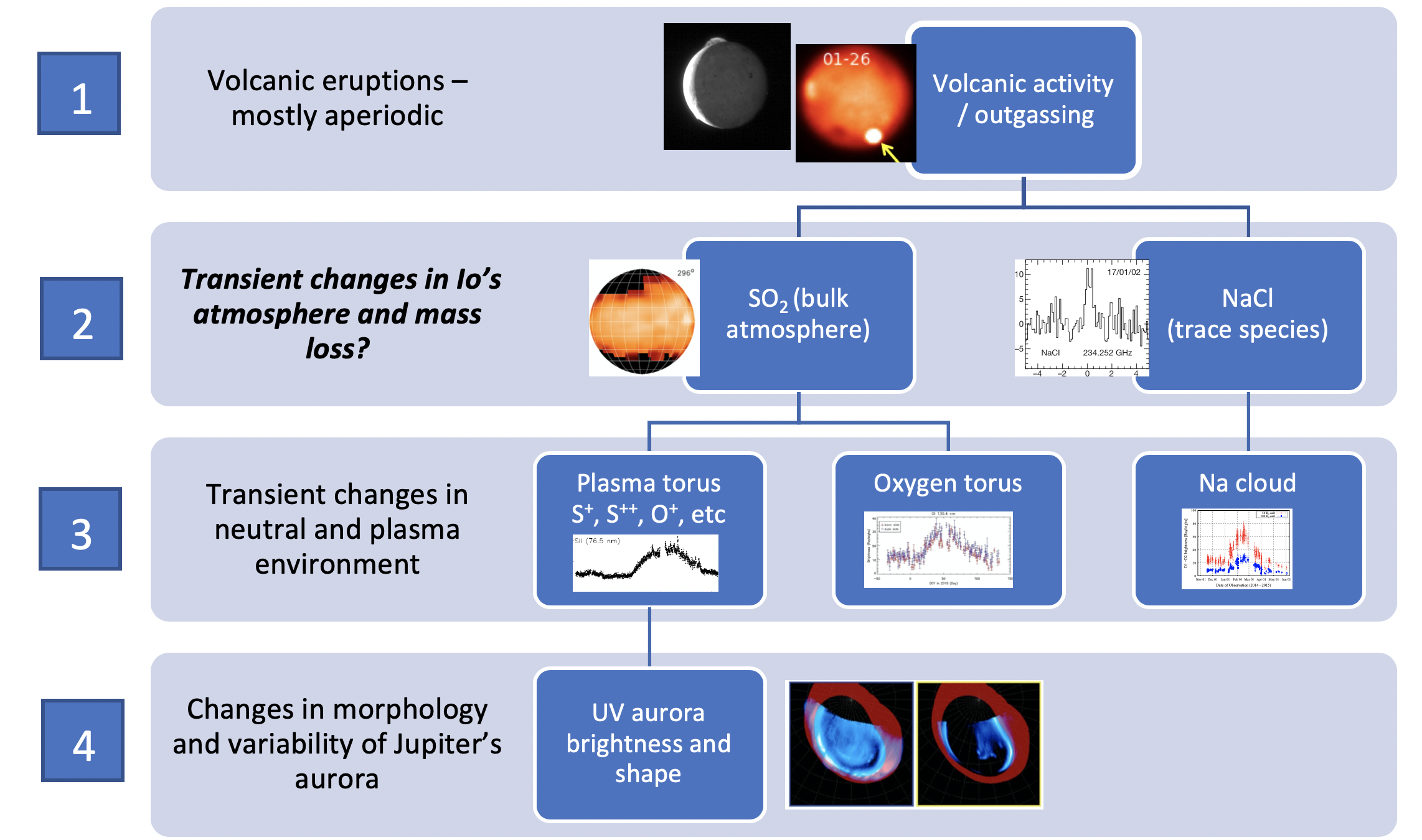The results of the team discussions will be summarized in a review paper.
The paper is planned to be submitted to Space Science Review (SSR) before the first flyby of the NASA Juno probe at Io, i.e., before Dec 30, 2023. If you are interested in the review paper on Io’s mass loss, please contact team lead Lorenz Roth (lorenzr@kth.se).
The discussions are guided by the following objectives:
- review the available observations of Io’s volcanic hot spots, atmospheric density and the neutral and plasma environment.
- search for potential correlations between the different datasets and assess the variability.
- assess the existing theoretical descriptions of Io’s atmosphere including particle simulations of plume dynamics, review the canonical assumptions such as mass loading rate of 1 ton/s
- define ways for improved modelling of the atmospheric as well as magnetospheric processes
- compile and assess possible other sources for transient changes in the magnetosphere
- plan observing strategies to obtain reliable constraints on the variability of Io’s atmosphere using Earth-bound or ground-based telescopes.
- define suitable strategies for future missions, such as the icy moons missions JUICE and Europa Clipper or a dedicated Io mission like IVO.

Schematic view of the acclaimed chain of changes in the plasma and neutral environment (3) and magnetosphere (4) triggered by volcanic eruptions on Io (1). The crucial link of the volcanic eruption to the magnetosphere is Io’s atmosphere (2), where transient changes in column density have not been observed up to date. Direct escape could link (1) with (3) without affecting (2), but the thermal escape rate is only marginal according to the current understanding. (Graphic by L. Roth)
